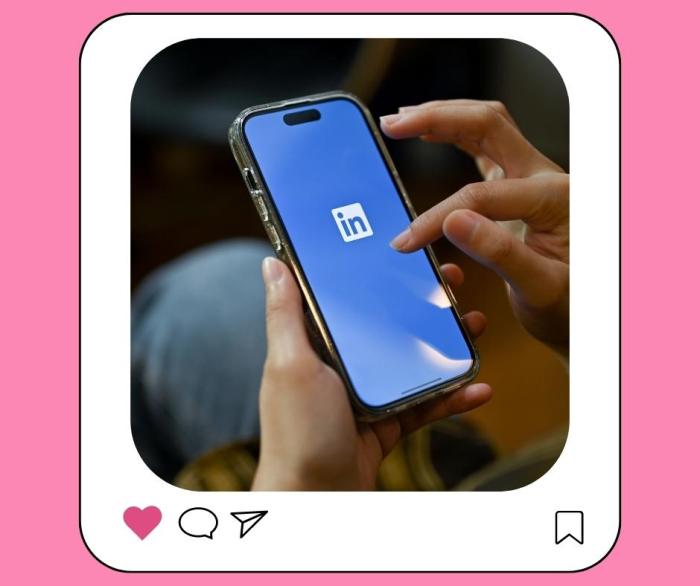Creating Visual Content for LinkedIn sets the stage for a dynamic exploration of design and engagement strategies tailored for this professional platform, offering insights that are both informative and visually captivating.
Unlocking the potential of visual elements, this guide delves into the nuances of crafting compelling graphics, infographics, videos, and interactive visuals to elevate your LinkedIn presence.
Understanding Visual Content on LinkedIn
Visual content plays a crucial role in attracting and engaging LinkedIn users. It helps to capture attention, convey messages effectively, and create a lasting impact on the audience. Here’s why visual content is essential on LinkedIn:
Types of Visual Content Suitable for LinkedIn Posts
- Infographics: Presenting data and information in a visually appealing way.
- Images and Graphics: Adding visuals to posts to make them more engaging.
- Videos: Sharing video content to provide valuable insights or showcase products/services.
- Slide Decks: Creating presentations to share knowledge and expertise.
How Visual Content Can Enhance Engagement on the Platform
Visual content on LinkedIn can significantly increase engagement by:
- Grabbing Attention: Visuals stand out in the feed and attract users to click and engage.
- Telling Stories: Images and videos can help tell a compelling story about your brand or message.
- Increasing Shareability: Visual content is more likely to be shared by users, expanding reach and visibility.
- Boosting Credibility: Well-designed visuals can enhance your credibility and expertise in your field.
Designing Visuals for LinkedIn

In the competitive world of LinkedIn, it’s crucial to create eye-catching graphics that will capture the attention of your audience. Visual content is a powerful tool that can help you stand out from the crowd and make a lasting impression. Here are some tips for designing visuals that will make your LinkedIn posts pop:
Use of Color Schemes and Branding
When designing visuals for LinkedIn, it’s important to consider your color scheme and branding. Choose colors that align with your brand identity and convey the message you want to communicate. Consistency in colors and branding will help increase brand recognition and establish a cohesive look for your content.
- Utilize your brand’s primary colors to maintain consistency and strengthen brand recognition.
- Consider the psychology of colors and how they can evoke emotions and convey messages effectively.
- Avoid using too many colors that may overwhelm or distract your audience.
Optimal Image Sizes and Formats
To ensure your visuals look their best on LinkedIn, it’s important to use the optimal image sizes and formats for posts. Different types of visuals may require specific dimensions to display correctly and attract engagement from your audience.
- For images, the recommended size is 1200 x 627 pixels to ensure high-quality display on LinkedIn.
- Use JPEG or PNG formats for images to maintain clarity and sharpness.
- Consider utilizing templates or design tools to create visually appealing graphics that are optimized for LinkedIn.
Utilizing Infographics and Data Visualizations
Infographics and data visualizations are powerful tools to make complex information more digestible and engaging for LinkedIn audiences. They can help you stand out in a crowded feed and convey key messages in a visually appealing way.
Benefits of Using Infographics on LinkedIn
- Grab Attention: Infographics are eye-catching and can stop scrollers in their tracks.
- Condense Information: Visuals can summarize data or concepts in a concise and easy-to-understand format.
- Increased Engagement: People are more likely to engage with visual content compared to plain text posts.
- Shareability: Infographics are highly shareable, allowing your content to reach a wider audience.
Examples of Effective Data Visualizations for LinkedIn Posts
- A bar chart showing the growth of a company’s revenue over the past year.
- A pie chart illustrating the distribution of resources in a project.
- A timeline infographic highlighting key milestones in a product launch.
Tools or Software to Create Engaging Infographics for LinkedIn
- Canva: A user-friendly online tool with pre-designed templates for infographics.
- Infogram: Allows you to create interactive charts and infographics for data visualization.
- Visme: Offers a wide range of design elements to create visually appealing infographics.
Leveraging Videos and Slideshows: Creating Visual Content For LinkedIn
Videos and slideshows are powerful tools that can significantly enhance your presence on LinkedIn and boost engagement with your audience. Here are some tips for creating compelling video content and utilizing slideshows effectively on the platform:
Videos for LinkedIn
Videos have become increasingly popular on LinkedIn, with statistics showing that they generate higher engagement rates compared to other types of content. To make the most out of videos on LinkedIn, consider the following tips:
- Create short and concise videos that get straight to the point.
- Add subtitles to cater to viewers who prefer watching videos without sound.
- Showcase your expertise or share valuable insights to establish credibility.
- Include a call-to-action at the end of the video to encourage viewers to engage further.
Slideshows on LinkedIn, Creating Visual Content for LinkedIn
Slideshows offer a dynamic way to share information in a visually appealing format on LinkedIn. Here are some ways to leverage slideshows effectively:
- Use eye-catching visuals and compelling headlines to grab the attention of your audience.
- Break down complex information into bite-sized slides for easy consumption.
- Include a mix of text, images, and data to make your slideshows engaging and informative.
- End with a strong conclusion or call-to-action to prompt viewers to take the next step.
Incorporating Interactive Visuals

Interactive visuals are a powerful way to engage your audience on LinkedIn by allowing them to actively participate with the content you share. These visuals go beyond static images or videos, enabling users to click, hover, or interact in some way with the visual elements.
Examples of Interactive Visual Content
- Interactive Infographics: Infographics that allow users to click on different sections for more detailed information.
- Poll Graphics: Visuals that include interactive polls or surveys for users to participate in.
- Interactive Maps: Maps that users can interact with by zooming in, clicking on markers, or exploring different layers of information.
Tools for Creating Interactive Visuals
- Canva: Offers templates and tools for creating interactive graphics and images.
- ThingLink: Allows you to add interactive elements to images, such as clickable hotspots or links.
- Tableau: Ideal for creating interactive data visualizations and charts to share on LinkedIn.






